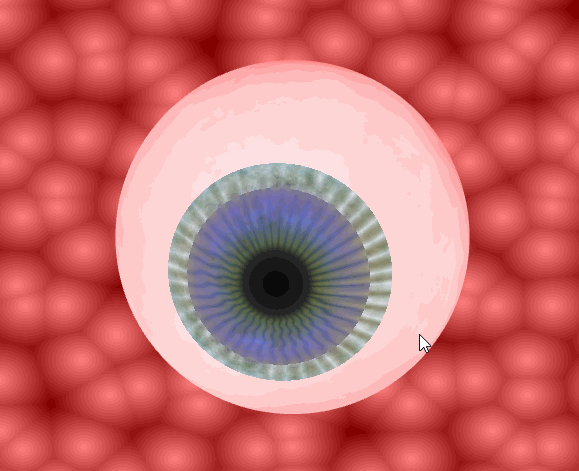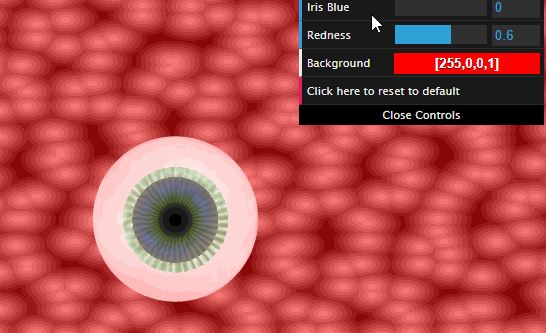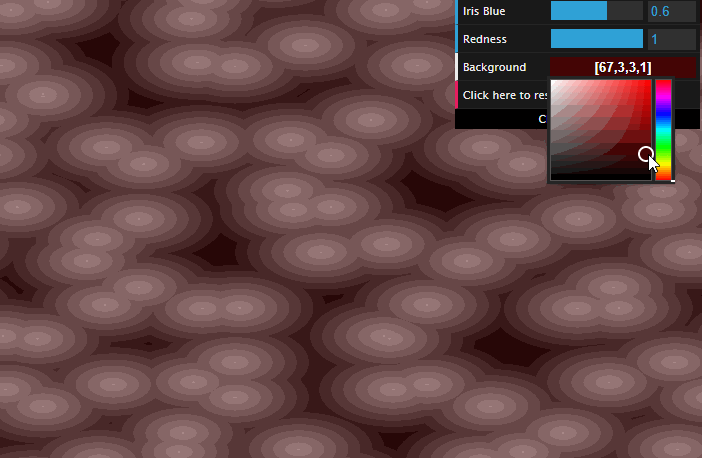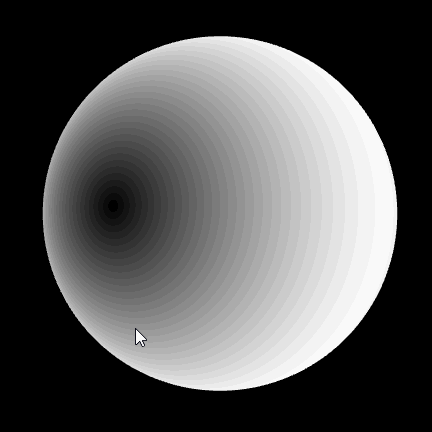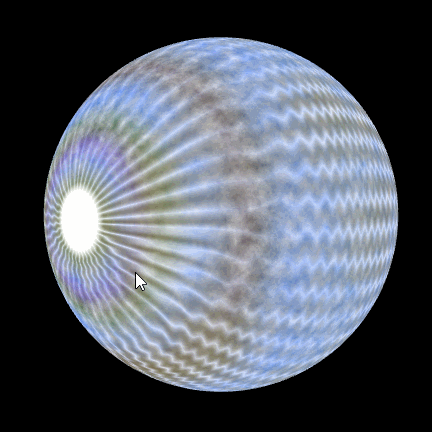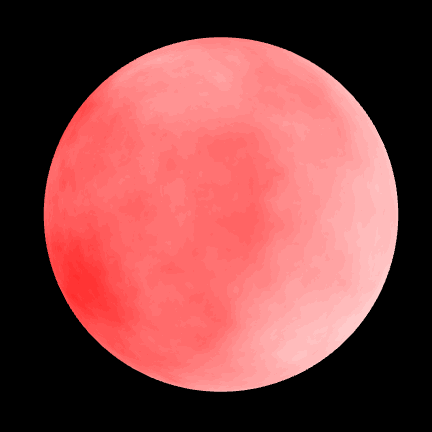Making an eyeball using noise functions - Click here for live demo
Note: some artifacts such as bands/rings which don't appear to be interpolating smoothly in the gifs on README.md are not visible in the live demo.
Noise functions form the basis of many aesthetically-pleasing graphics creations. A noise function is a seeded random number generator.
- Given some input parameters, returns a random-looking number: y = noise(x)
- Same input parameters will always produce the same output.
In this project, I have used a noise functions like FBM and Worley noise combined with some basic math functionsto generate an eerie looking eyeball. I will describe each of these functions below:
1. FBM (Multi-Octave Fractal Brownian Motion) : An FBM noise can be generated using a combination of multiple component frequencies. Each octave contribution can be modulated using frequency(rate of sampling) and persistence(decay of amplitude as frequency increases). I have used FBM noise to distort the blue color of iris and red color of the eyeball. Both these persistence values are parametrized and can be controlled by the user.
2. Worley Noise : In this project, I have used Worley noise as an interesting background with time affecting its input parameter
To generate Worley noise,
- Scatter N points randomly in a 2D image
- For every pixel in the image, find the point to which it is closest
- Calculate the distance between the pixel and point, and set the pixel’s brightness to that distance value
- If distance > 1, clamp to 1
The pupil itself mixes black with r(which depends on x and y) and gives more weight to r where r = sqrt(x 2 + y 2 ); where x and y are fragment positions. So when both x and y tend to 0, mixed result shows black.
The iris is made up my mixing blue, green and brown FBM distributions using smoothstep. A combination of cos waves with small phase differences generates the lines on the iris. These waves depend on z coordinate of the fragment position, and theta calculated as atan(x,y).
The eyeball is an FBM noise with 8 octaves which distributes the red color. Combining this with the iris waves generates vein like structures behind the eyeball.
- UPenn CIS 566 Procedural Graphics course slides
- UPenn CIS 460 Interactive Computer Graphics course slides
- Inigo Quilez website
- Live demo backup link
